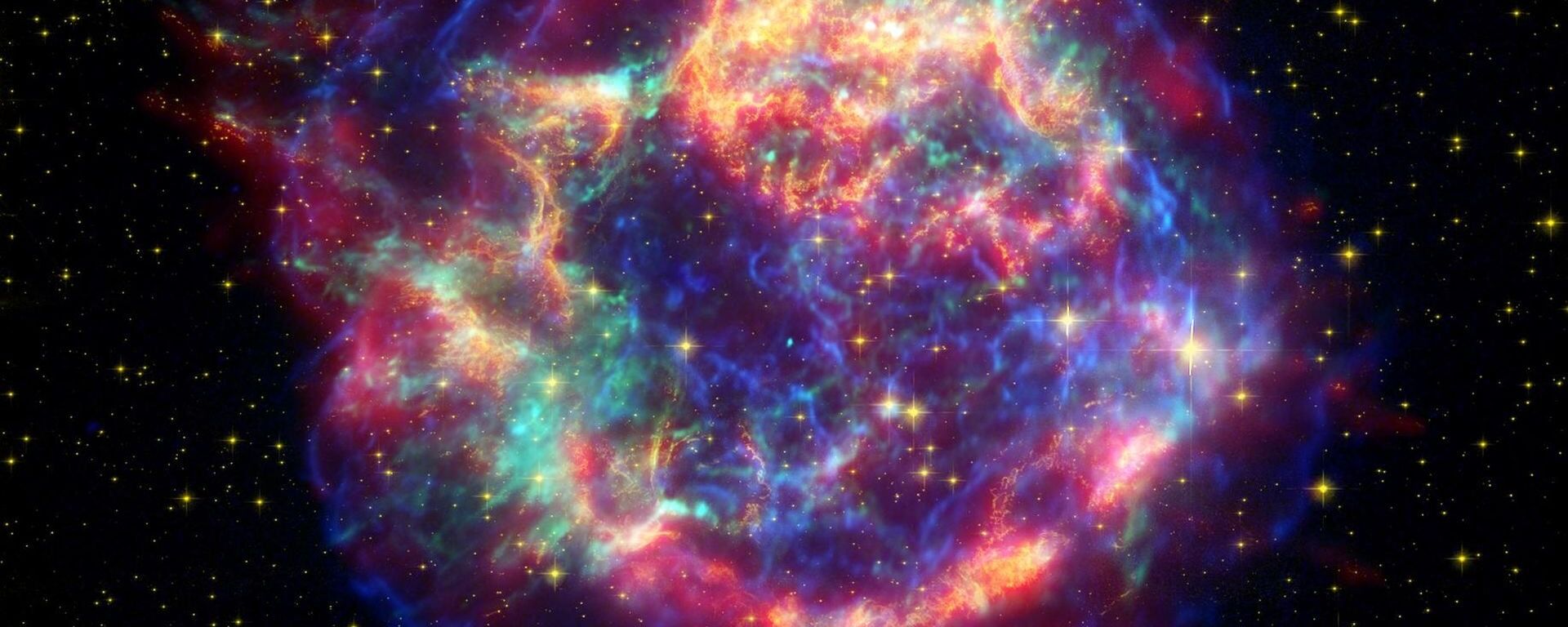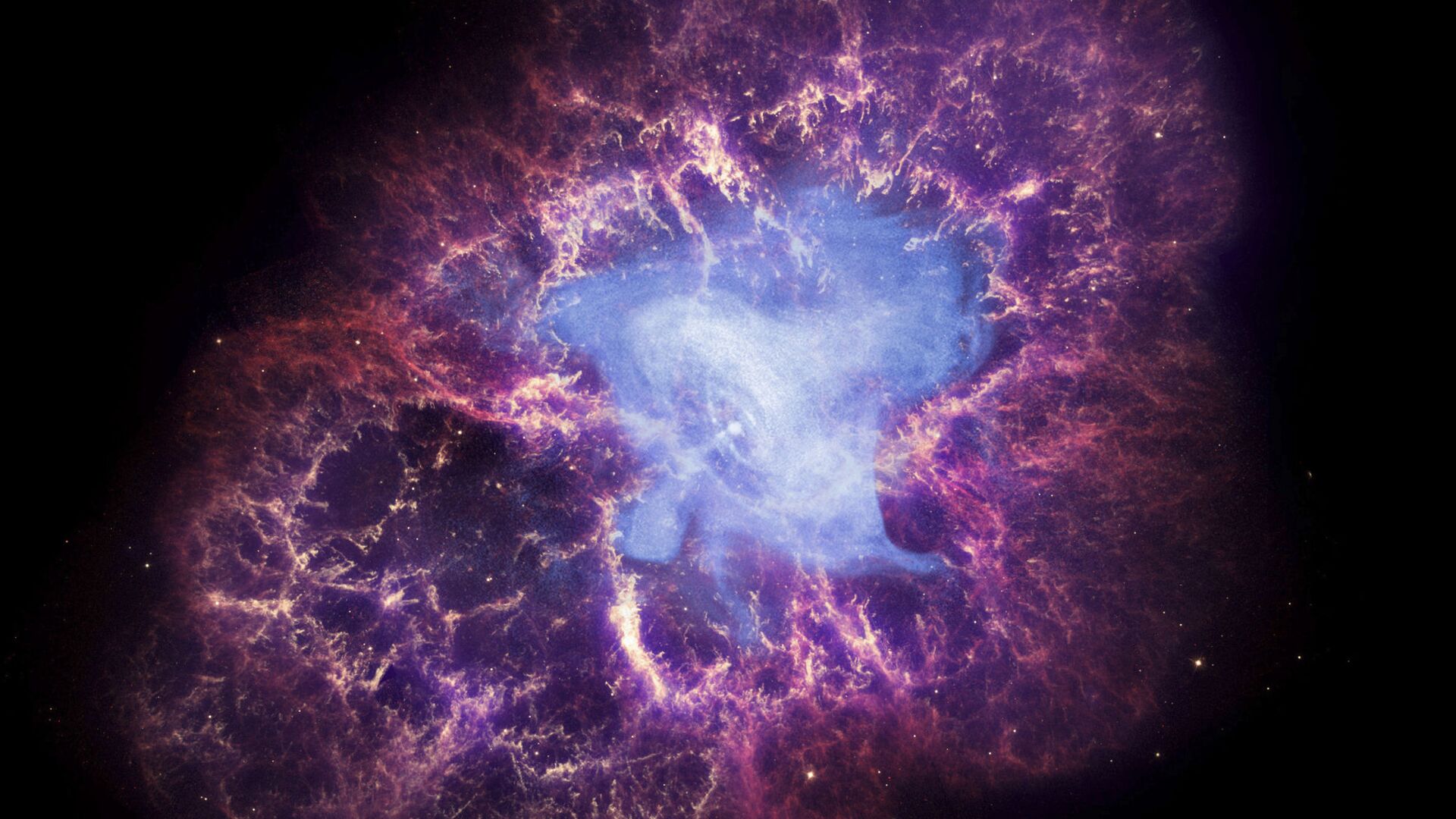https://sputnikglobe.com/20210924/new-huge-space-cavity-of-unknown-origin-may-explain-how-stars-are-born-scientists-suggest-1089368861.html
New Huge Space Cavity of Unknown Origin May Explain How Stars Are Born, Scientists Suggest
New Huge Space Cavity of Unknown Origin May Explain How Stars Are Born, Scientists Suggest
Sputnik International
The universe has several "void" bubbles, with one of the most well-known named "The Great Nothing". It is a 330,000,000 light-year Boötes void, located in the... 24.09.2021, Sputnik International
2021-09-24T12:21+0000
2021-09-24T12:21+0000
2023-04-12T16:57+0000
stars
science & tech
supernova
space
https://cdn1.img.sputnikglobe.com/img/07e4/08/11/1080190824_0:448:2048:1600_1920x0_80_0_0_f1fd9c0f35dec7a1f7497161e413e7b3.jpg
A group of scientists from Harvard and the Smithsonian and the University of Vienna have discovered a new gigantic space cavity of an unknown origin, according to a study published in The Astrophysical Journal Letters.The newly-discovered space void spans about 150 parsecs, which is nearly 500 light-years and is located in the sky among the constellations Perseus and Taurus - "two regions in space where stars form", according to João Alves from the Department of Astrophysics at the University of Vienna.While the scientists are yet unable to explain the exact way the void formed, they have two theories to share.Per the researchers, the void could have formed some 10 million years ago. Bialy explained that when a star dies, its supernova explosions could trigger a chain of events that could lead to the birth of new stars.The void was discovered when the study group was looking into a new 3D map visualising molecular clouds in space that was created with the use of new data from Gaia, a space-based observatory launched by the European Space Agency (ESA).
https://sputnikglobe.com/20210917/cosmic-rerun-10-billion-year-old-supernova-will-soon-appear-again---scientists-reveal-why-1089147542.html
Sputnik International
feedback@sputniknews.com
+74956456601
MIA „Rosiya Segodnya“
2021
News
en_EN
Sputnik International
feedback@sputniknews.com
+74956456601
MIA „Rosiya Segodnya“
Sputnik International
feedback@sputniknews.com
+74956456601
MIA „Rosiya Segodnya“
stars, science & tech, supernova, space
stars, science & tech, supernova, space
New Huge Space Cavity of Unknown Origin May Explain How Stars Are Born, Scientists Suggest
12:21 GMT 24.09.2021 (Updated: 16:57 GMT 12.04.2023) The universe has several "void" bubbles, with one of the most well-known named "The Great Nothing". It is a 330,000,000 light-year Boötes void, located in the vicinity of the constellation of the same name.
A group of scientists from Harvard and the Smithsonian and the University of Vienna have discovered a new gigantic space cavity of an unknown origin, according to a study
published in The Astrophysical Journal Letters.
The newly-discovered space void spans about 150 parsecs, which is nearly 500 light-years and is located in the sky among the constellations Perseus and Taurus - "two regions in space where stars form", according to João Alves from the Department of Astrophysics at the University of Vienna.
While the scientists are yet unable to explain the exact way the void formed, they have two theories to share.
"Either one supernova went off at the core of this bubble and pushed gas outward forming what we now call the 'Perseus-Taurus Supershell', or a series of supernovae occurring over millions of years created it over time", said Shmuel Bialy, a postdoctoral researcher at the Institute for Theory and Computation (ITC) at the Centre for Astrophysics, who led the study.
Per the researchers, the void could have formed some 10 million years ago. Bialy explained that when a star dies, its supernova explosions could trigger a chain of events that could lead to the birth of new stars.

17 September 2021, 08:31 GMT
The void was discovered when the study group was looking into
a new 3D map visualising molecular clouds in space that was created with the use of new data from Gaia, a space-based observatory launched by the European Space Agency (ESA).




